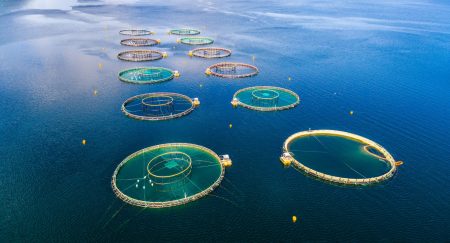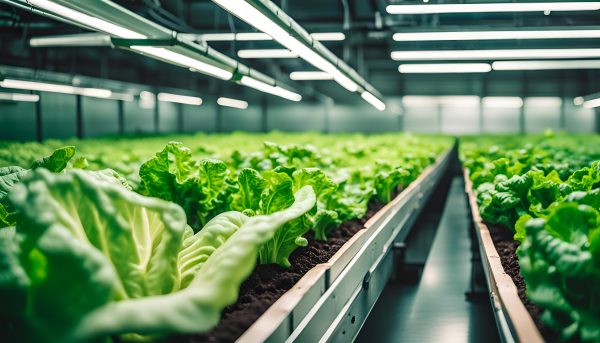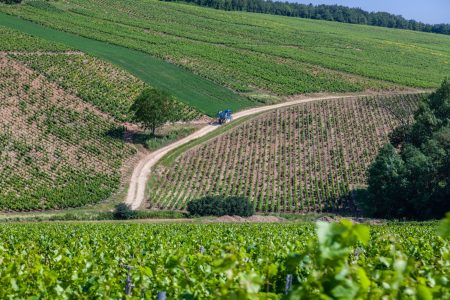
Opinion
HORIZON EUROPE
26 key opportunities in Farm2Fork and CircBio for 2024

Damián Muruzábal
Food and Bioeconomy Knowledge Area Leader
An area that plays a key role in sustainable development
Likewise, the circularity approach in the bioeconomy seeks to reduce the total amount of waste and its associated impact, promoting the reintegration of by-products or waste in other production cycles to generate new products or increase their added value, minimising soil, air and water pollution, thus helping to avoid damage to the environment, the climate and biodiversity.
The technologies and innovations surrounding biology, associated with other sciences and the new information and communication technologies, will be the protagonists of change, promoting simultaneous progress in the intensification of production and the environmental sustainability of the production system as a whole.
The challenge is to make possible the production of higher quality foodstuffs at reasonable prices and adaptation to consumer demands, with a reduction in the impact derived from their production, both in terms of emissions and in terms of the water footprint or the use of chemical products in the production process, through improvements in the efficiency of the use of inputs.
All of this, in addition to guaranteeing the sustainable use of resources, such as soil and water, the conservation of biodiversity and ecosystems, ensuring their maintenance for future generations, and the development of sustainable food models. Along these lines, it will also be possible to make progress in rural development as another element of the bioeconomy.
We are here to help you, write to us and our team will answer you as soon as possible.
Kaila helps you to manage innovation ecosystems, identify funding opportunities in the agroalimentation and bioeconomy area; and find potential partners for projects. Try it now!

The keys to ensuring the proper functioning of the bioeconomy are sustainability and circularity.
+80
European projects submitted to food and bioeconomy
30%
Success rate of approval in the presentation of European projects

The agri-food sector is currently facing a series of global challenges in order to adapt to an increasingly competitive environment. It is a question of efficiently combining the search for greater sustainability throughout the entire process. This sustainability has three aspects that must be addressed together: environmental sustainability, economic sustainability and social sustainability.
The bioeconomy is an economic model based on the use of renewable biological resources and their transformation into new products or services with higher added value, such as bioenergy or other bioproducts like food additives from fibres or natural oils, new bioplastics or the use of lignin to obtain new molecules. This model arises as a response to current environmental and social challenges to guarantee the supply and fair distribution of food, mitigate the effects of climate change and reduce the use of fossil fuels. It also generates new opportunities for economic development and employment, especially important in rural areas.
On the one hand, if we talk about research and innovation in agri-food and bioeconomy, Horizon Europe stands out as the largest source of public funding in the European Union (EU), with a total budget of 95.5 billion euros. The programme, divided into several thematic clusters, devotes around €9 billion to Cluster 6 on “Natural Food, Bioeconomy, Agriculture and Environment” for the period 2021-2027.
Similar to Cluster 6, the public-private partnership programme Circular Bio-based Europe (CBE JU) funds projects that develop innovative and sustainable bio-based solutions, focusing on raw materials, processing, products, as well as cross-cutting aspects of communication and environmental sustainability.


Opinion
HORIZON EUROPE

Damián Muruzábal
Food and Bioeconomy Knowledge Area Leader

Opinion
European Commission

Gabriele Gaffuri
Senior Consultant specialised in Circular Economy Projects

Opinion
SUSTAINABLE TEXTILES

Jack Turner
Expert Consultant in the field of Environment

Project
MarginUp! Is developing sustainable and circular value chains to produce bioproducts and biofuels from natural raw materials grown on marginal...

Project
Soil health
InBestSoil aims to co-create an investment framework around soil conservation and restoration by developing an economic valuation system for the...

Project
ToNoWaste it is an open innovation ecosystem designed to leverage previous findings for the identification of social, technical/environmental, economic, political/legal,...

Project
GO-GRASS will develop a new circular and integrated agri-food system whose main application will be in grasslands and which will...

Horizon Europe is the European Union's Framework Programme for research and innovation funding for the period 2021-2027. The programme has a budget of €95.5 billion.

European Partnerships are initiatives in which the EU commits to jointly support the development and implementation of a programme of research and innovation activities together with public and/or private partners.

EIT Manufacturing is an innovation community that unites European leaders to drive industrial innovation and keep Europe as a leader in the field. Integrating industry, universities and technology centres, they aim to create a global community for a more competitive and sustainable industry.
This website uses cookies so that we can provide you with the best user experience possible. Cookie information is stored in your browser and performs functions such as recognising you when you return to our website and helping our team to understand which sections of the website you find most interesting and useful.
Strictly Necessary Cookie should be enabled at all times so that we can save your preferences for cookie settings.
This website uses Google Analytics to collect anonymous information such as the number of visitors to the site, and the most popular pages.
Keeping this cookie enabled helps us to improve our website.
Please enable Strictly Necessary Cookies first so that we can save your preferences!
This website uses the following additional cookies:
(List the cookies that you are using on the website here.)
Please enable Strictly Necessary Cookies first so that we can save your preferences!